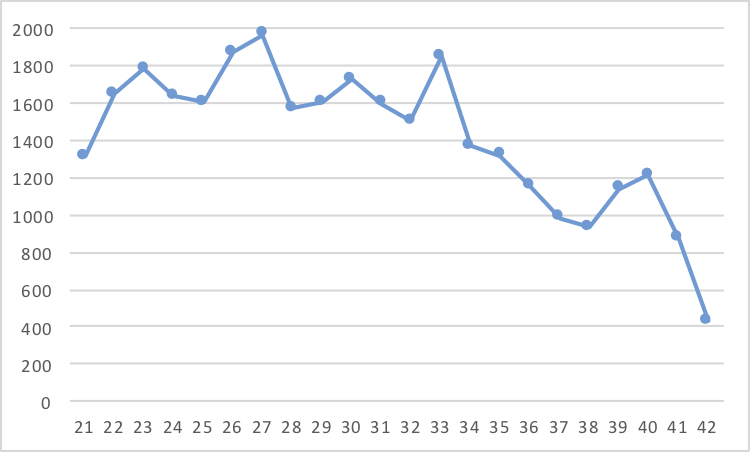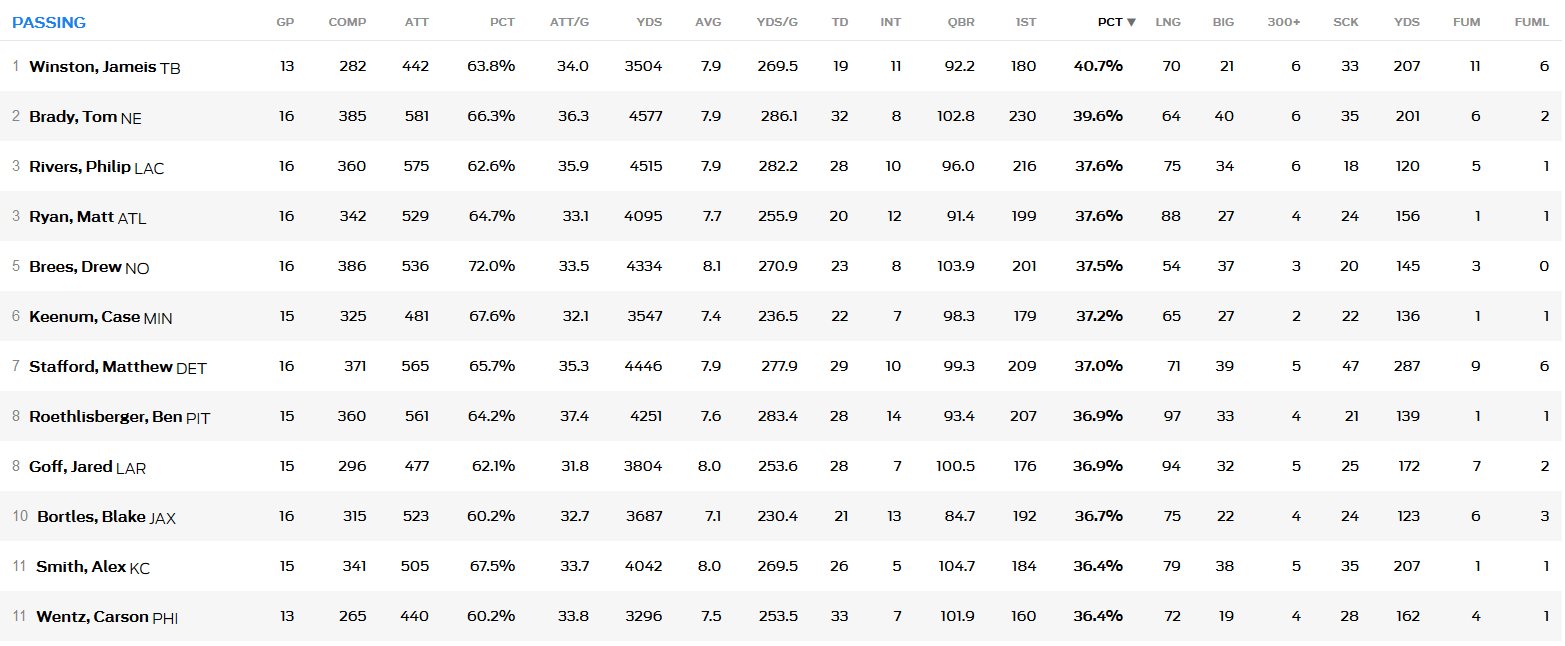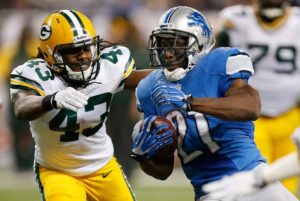Today’s post is a re-post from friend of the program Bryan Frye’s site, which is being republished with his permission and encouragement. As regular readers know, Bryan operates his own fantastic site, http://www.thegridfe.com. You can view all of Bryan’s guest posts here, and follow him on twitter @LaverneusDingle. Enjoy!
Born March 26, 1960 in San Diego, California, Marcus Allen knew from a young age he was a special talent. During neighborhood football games, he was always several steps ahead of everyone else. He preferred playing defensive back and aspired to be like his hero Lem Barney, but he also spent time in his backyard trying to emulate the running style of Browns legend Leroy Kelly. That time paid dividends when Abraham Lincoln High School coaches Vic Player and Roy Reed decided to make Allen a two-way player, starting him at quarterback. Although Allen was recruited to the University of Southern California to play safety, head coach John Robinson saw enough to Allen’s rushing ability on tape to move him to running back.
He began his college career as a backup for star tailback Charles White. He excelled in limited action, helping the Trojans win a national title as a freshman. The following year, in an effort to maximize the talent on the field, running backs coach John Jackson moved Allen to the fullback position, where he would block for White, as well as have more opportunities to carry the ball. Allen proved to be a proficient and determined blocker, helping pave the way for White to gain 1,803 rushing yards and take home the Heisman Trophy in 1979.
When Allen finally got his chance to carry the load as the team’s primary starter, he proved himself one of the best backs in the nation. He gained 1,794 yards and scored 15 touchdowns as a junior, but that was just a preview of what the talented tailback could do on the field. As a senior, in 1981, Allen put on a masterful all-around performance. He eclipsed 200 rushing yards in eight of eleven games on his way to becoming the first player to run for over 2,000 yards in a single season. Combined with his contribution as a receiver, Allen led the nation with 2,559 yards and 23 touchdowns, earning the Heisman Trophy in the process.
Following a decorated career at USC, Allen was drafted tenth overall to the Los Angeles Raiders in the 1982 NFL Draft. Amidst a tumultuous season in which a players strike reduced the schedule to just nine games, the 22 year old rookie thrived. He started strong, picking up 180 yards and a touchdown in his first ever game as a pro. He built on that success and, ultimately, led the league in both yards and scoring while helping the Raiders to an NFL-best 8-1 record. Despite suffering an upset loss to the Jets in the divisional round of the playoffs, Raiders faithful knew they had found a special talent in Allen.
In his second year, he proved to be a dynamic weapon, picking up 1,604 yards on 266 carries and a career-high 68 receptions. He even completed four of seven passes for 111 yards and three scores. Those were solid numbers, but they weren’t enough to garner Allen as much as a Pro Bowl nod. It was the postseason where he built his legacy. En route to trouncing every team on the Raiders’ schedule, Allen gained 584 yards and scored five touchdowns. This included one of the great highlights in Super Bowl history against the favored Washington juggernaut. After his defense stopped John Riggins on a 4th and 1, Allen drove the final nail in the coffin with the signature run of his storied career: a sure stop for a loss that he turned into a 74 yard touchdown jaunt through the heart of the Washington faithful. He earned the Super Bowl MVP award for his efforts.
The following season, he continued to prove his versatility, gaining 758 receiving yards to complement his 1,168 rushing yards. He also led the league with 18 touchdowns. He then outdid himself just a year later. The 1985 season was Allen’s finest as a pro. He rushed for a league-high 1,759 yards and gained a then-record 2,314 yards from scrimmage. His prolific production behind an unheralded offensive line earned him the Most Valuable Player award from the Associated Press and the Pro Football Writers Association. In winning MVP honors, Allen became the only player in history to win an NCAA National Championship, a Heisman Trophy, a Super Bowl, and be named Super Bowl MVP and a league MVP.
Unfortunately, the success of his MVP performance did not carry over into the following season. After topping 100 yards on the ground in the first two games, Allen suffered a nagging ankle injury that diminished his effectiveness for the rest of the year. He would not gain 100 yards on the ground again that season and, in fact, would only top the century mark in six more games in his career. Although he played in 13 games, he lacked the game-changing ability that once defined him. The low point of the season came in week 13 against the Eagles: driving to set up a game-winning field goal in overtime, Allen lost a fumble that was returned 81 yards to set up a Randall Cunningham touchdown run. Some observed this was the turning point in Allen’s career with the Raiders.
In 1987, a players strike saw one game removed from the league schedule and another three played primarily by replacement players. To the displeasure of Raiders owner Al Davis, Allen never crossed the picket line. When it ended, Allen returned from the strike to contend with Davis signing college football legend and professional baseball player Bo Jackson to play running back during the latter part of the season. Although this initially resulted in a timeshare at halfback, Allen ultimately volunteered to play fullback and use his blocking prowess to clear holes for Jackson. This allowed head coach Tom Flores to fully exploit his talented stable of backs, but it also meant significantly fewer carries for Allen. It was a sign of things to come.
Over the next three seasons, Allen would carry the burden of the team’s rushing attack for the first half of the season, knowing he would have to relinquish the role to a part-time football player for the latter part of the year. He threw key blocks for the younger back, threatened opposing defenses as a receiver, often played injured, and led his team by example in the locker room. Even after Jackson suffered a career-ending hip injury, Davis brought in veterans Roger Craig and Eric Dickerson to take the leading role. It wasn’t until 1993, when he was 33 years old, that he was able to get a fresh start and a starting job for a new team.
After being pursued by Chiefs head coach Marty Schottenheimer, Allen joined fellow veteran expat Joe Montana in Kansas City. He repaid his coach’s faith by playing five more years and scoring 47 more touchdowns, including a league-leading 12 rushing scores in his first year with the team. Although age and injury had taken their toll on Allen’s physical abilities, he maintained the mental toughness and innate ability to play football. Schottenheimer would later say: “If God put one person on this earth to be a professional football player it would have been Marcus Allen… He was the most instinctive, natural football player that I have ever been around.”
By the time he retired at the age of 38, he had played in more games (220) and scored more touchdowns (145) than any running back to that point in history. Some focus solely on his career arc and write him off as a compiler who only produced big numbers because he played for a long time. That is simply not the case. On account of the strike his rookie year, his first four seasons comprised just 57 regular season games. Compared with every player in history through the same number of games, Allen ranks fifth in yards from scrimmage (6942). Thanks to injuries, strikes, and Davis’s eccentricity, after those first four years, he never played another full season with a starter’s workload.
His uncanny knack for finding the end zone contributed significantly to his long career. As an elder statesman, he was used as the Chiefs’ primary goal line threat. Even when banished to Davis’s doghouse, Allen still got the nod from coaches in critical situations. Consequently, he was able to pick up 18 of his 123 rushing touchdowns during his last four seasons with the team, despite averaging fewer than eight carries per game over that span. It speaks volumes that coaches were willing to disregard ownership in order to get Allen on the field. But it wasn’t just his coaches who valued him; his teammates thought enough of him to vote him team MVP four times between 1984 and 1988, despite his reduced role as a ball carrier.
Despite missing time and feuding with the owner, Allen remained productive when on the field. He was a talented enough receiver that draft analysts thought he might be switched to wide receiver coming out of college. They were on to something. At the time he retired, Allen ranked 22nd among all players, and first among running backs, with 587 career receptions. He was also the first player ever to rush for over 10,000 yards and gain over 5,000 yards receiving in a career. Twenty years later, only Marshall Faulk and Tiki Barber have joined that club.
Allen played a full season’s worth of playoff games. In those 16 games, he had 267 carries for 1,347 yards (5.0 YPC) and 11 touchdowns. He added 53 receptions for 530 yards and two touchdowns. A season of 1,877 yards and 13 touchdowns is even more impressive when you consider that nine of those games came after Allen turned 30.
He also used his quarterback pedigree to benefit his teams in the NFL. Over the course of his career, he completed 12 of 27 passes for 282 yards and six touchdowns. These weren’t typical goal line gadget plays you’d expect to see from a running back; they were largely plays with the same degree of difficulty you’d assign to a quarterback.
That kind of versatility earned him admiration from coaches across the league. In a 1985 article, the Los Angeles Times asked several NFL coaches to rate contemporary running backs. Despite a presumed lack of speed leaving him ranked as the ninth-best pure runner, the panel thought enough of the rest of his game to rank him (tied with Walter Payton) as the best all-around running back.
We’ve established that Allen was a natural runner, punishing blocker, talented receiver, and, when called upon, a decent passer. As important to his legacy as his prodigious on-field accomplishments, however, may be his strength of character.
Davis valued loyalty and reportedly considered Allen’s refusal to cross sides during the strike, as well as his frequent holdouts, as personal betrayals. As an act of retribution, Allen believed, Davis refused to release or trade him, instead preferring to let him sacrifice his body as a 205 pound blocking back. It was rumored that Davis instructed the coaching staff not to play him and even went as far as warning quarterback Jay Schroeder not to look to him on pass plays. Despite knowingly fighting an uphill battle, the star running back didn’t create tension in the locker room and, in fact, was universally respected by his peers.
Even after filing an antitrust suit against the NFL (helping pave the way for unrestricted free agency) and publicly lamenting that Davis robbed him of his prime, his teammates honored him with his fifth Commitment to Excellence Award. He was a steadfastly unselfish teammate, even at the expense of his own legacy, and the guys in the locker room recognized both his resilience and his leadership. To paraphrase Allen: You can’t pretend to be tough; either you are or you aren’t. Both mentally and physically, Marcus Allen was tough. He is also one of the all-time greats.
















